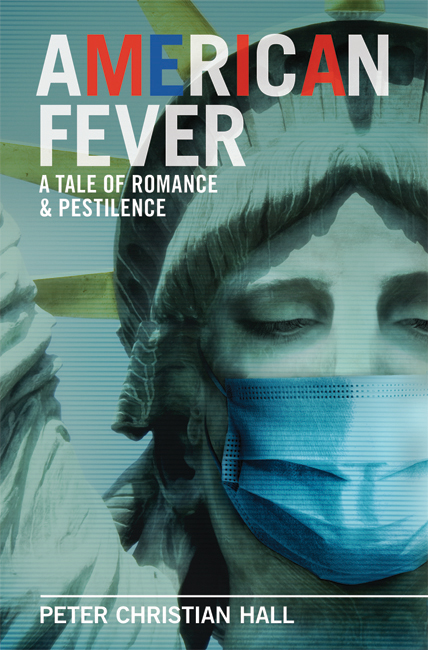Day 10: An Outbreak of History, Mine & Ours
There’s lots of dangerous talk about mandating mass quarantines, which no credible experts think can fend off pandemic flu. Beware the kind of governmental exercise that makes uninformed people feel a crisis is coming under control.
Look at how quickly Florida’s National Guard occupied poor neighborhoods when H5N1 broke out in Miami. Was that a health measure? A bid to intimidate the locals? A kind of coded reassurance to the (distant) general public—a message that order will be maintained by any means necessary?
You may find this hard to believe, but the U.S. government and press ignored H1N1 in 1918. Although influenza wound up taking far many more lives than World War I did, the state had already mobilized to fight Germany. One enemy was enough.
 SARS SHOCKED THE WORLD, HO HUMOn entering World War I in 1917, Washington suppressed free speech and seized thousands of newspapers. A Federally sanctioned private gang called the American Protective League worked with the Attorney General to spy on people and stifle dissent. Lest the pandemic distract the masses from the War Effort, American health officials insisted there was nothing unusual about that flu. No one mentioned or reported that U.S. troop ships embarking with healthy draftees were unloading their corpses in Europe—if they hadn’t already dumped them at sea.
SARS SHOCKED THE WORLD, HO HUMOn entering World War I in 1917, Washington suppressed free speech and seized thousands of newspapers. A Federally sanctioned private gang called the American Protective League worked with the Attorney General to spy on people and stifle dissent. Lest the pandemic distract the masses from the War Effort, American health officials insisted there was nothing unusual about that flu. No one mentioned or reported that U.S. troop ships embarking with healthy draftees were unloading their corpses in Europe—if they hadn’t already dumped them at sea.
Ah, but Spain was neutral. When H1N1 raged in Madrid—whose papers were allowed to report widespread death—the warring powers’ press discovered that a special flu had erupted there! ‘Spain’ became code for things that couldn’t be discussed. A global disease that may well have started in the fields and parade grounds of Kansas thus became known as the Spanish Flu.
From SARS to H5N1
A pathologist in Pittsburgh has asked what made me a flu bug.
It began with SARS. When the first case of Severe Acute Respiratory Syndrome was reported in New York, where all diseases turn up, I ordered paper N95 masks. The box didn’t reach me till the scare was nearly over.
I started reading about viruses, beginning with Frank Ryan’s Virus X, a striking exploration of microbes and how the destruction of rain forests may be uncorking nature’s antipersonnel devices—viral bombs that defend species we’ve never even heard of. Plagues and Peoples by William H. McNeill taught me how disease has shaped and changed human society from the start. Jared Diamond covered some of this in Guns, Germs, and Steel, too. (These books and others I mention are now available for sale on my new Cultural Merchandise Page!)
I discovered that the doctors who first encountered SARS were terrified that it was something called H5N1, which I recalled had killed chickens in Hong Kong. (The story of SARS is vibrantly told in Karl Taro Greenfeld’s China Syndrome.) After reading John Barry’s excellent The Great Influenza, I realized that SARS had proved relatively easy to contain because victims showed symptoms before they went contagious. In the case of influenza, infectees spread it for days before falling ill—if they become ill at all. As many as half the people who carry seasonal flu may never show symptoms. They can pass it along with each breath and handshake.
Obscure Alarmist Makes Good—Finally
After my first year of investigating H5N1, friends stopped humoring me. People emailed articles disparaging my pandemic. Lefties said it was a conspiracy by the Bush Gang to profit from Tamiflu. (Successor Barack Obama’s portfolio prospered by holding shares in the same company—Gilead—though this didn’t bother anyone.) The right-wing John Birch Society called bird flu a scam “to justify expansions of government power and integration of nations.” Still, my favorite political comment was that the moral failings of liberals would cause H5N1 to kill more of them. Are party pollsters tallying fatalities yet?
After a few H5N1 alarms, pandemic fatigue set in. Americans don’t like to prepare for the worst; optimism sells. If you predict a catastrophe, it had better show up.
Then came the unexpected: swine flu. I stockpiled supplies, began filling orders, and got a Pneumococcus vaccination. (Half of all American seasonal flu victims die from pneumonia.) I took it very seriously.
Gradually scientists came up with lots of reasons why H5N1 would never turn contagious in the ways Pandemic H1N1 was thought to have done in 1918. Nothing fails like failure! Now that humans are finally receptive to H5N1, I look forward to the rush of studies that will explain why it happened.
Now click on Graham Parker’s ferocious song about Protection.



 [American Fever]
[American Fever]